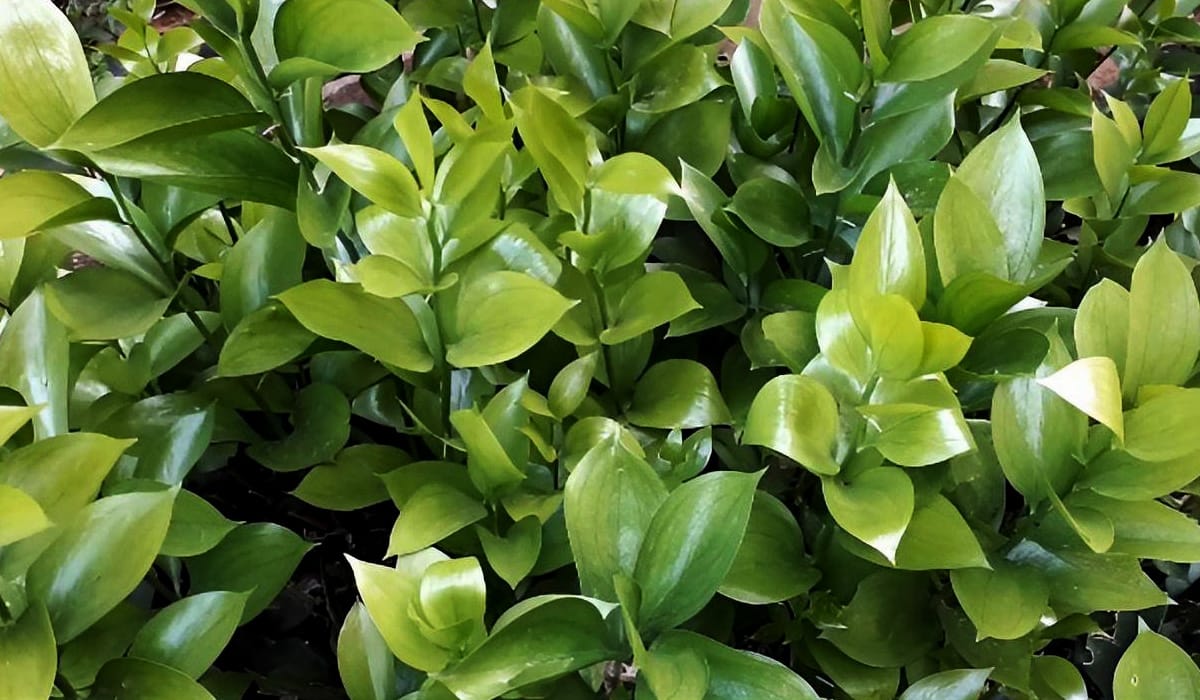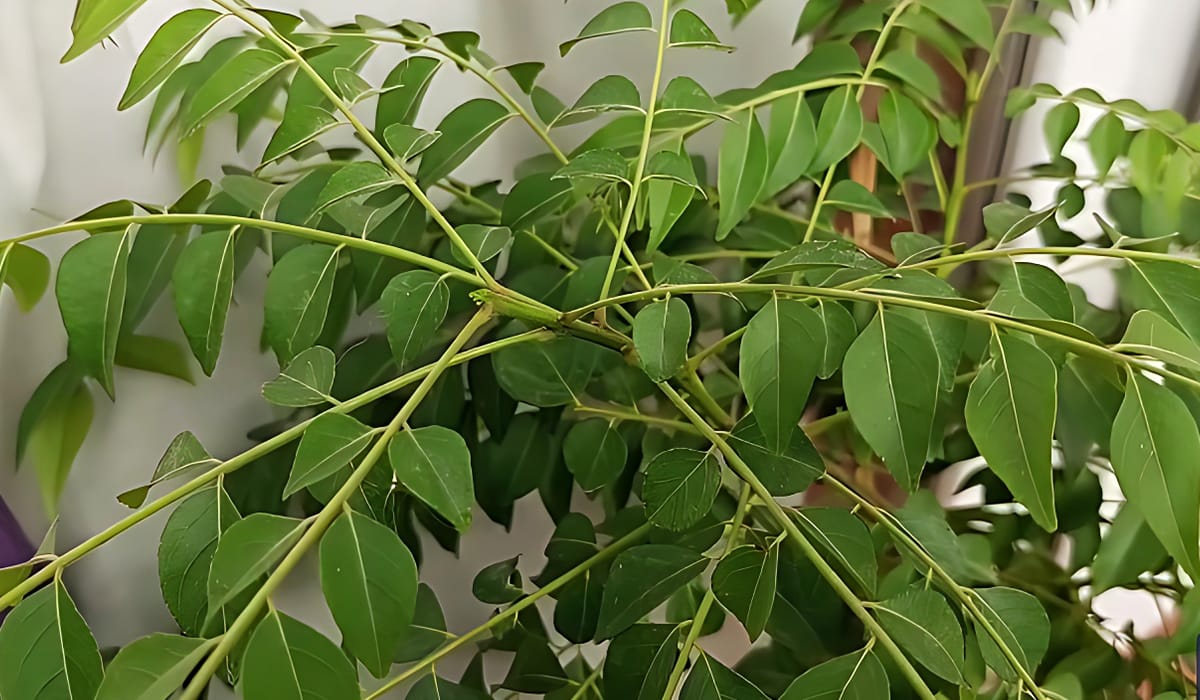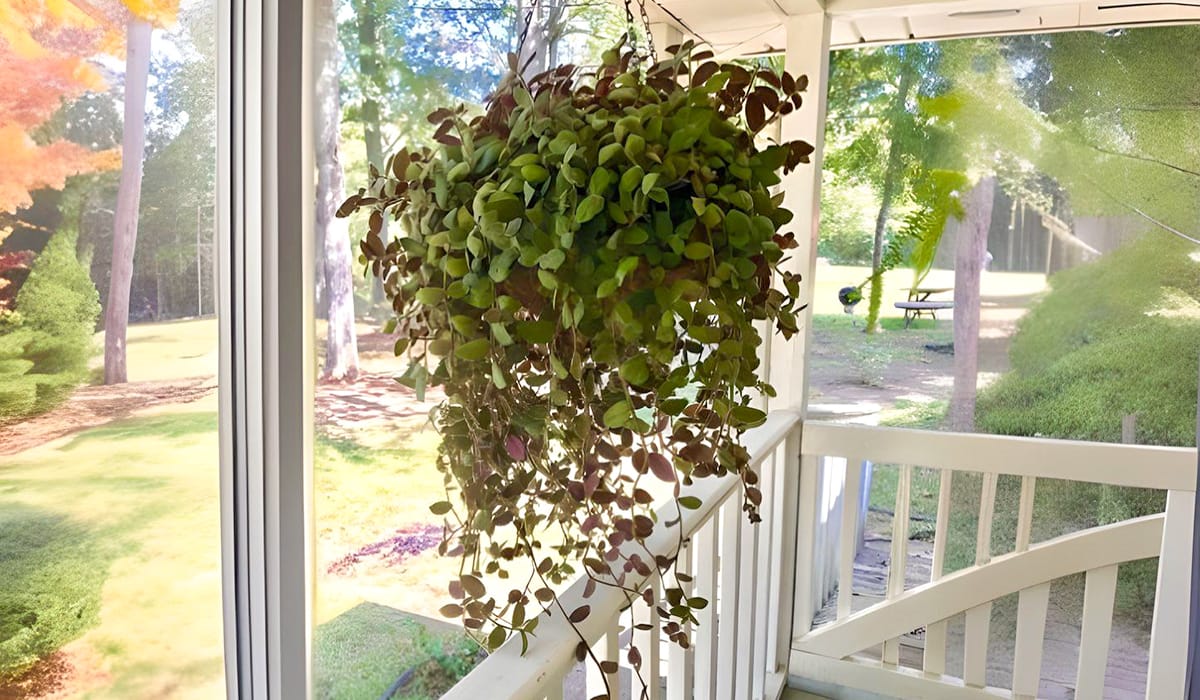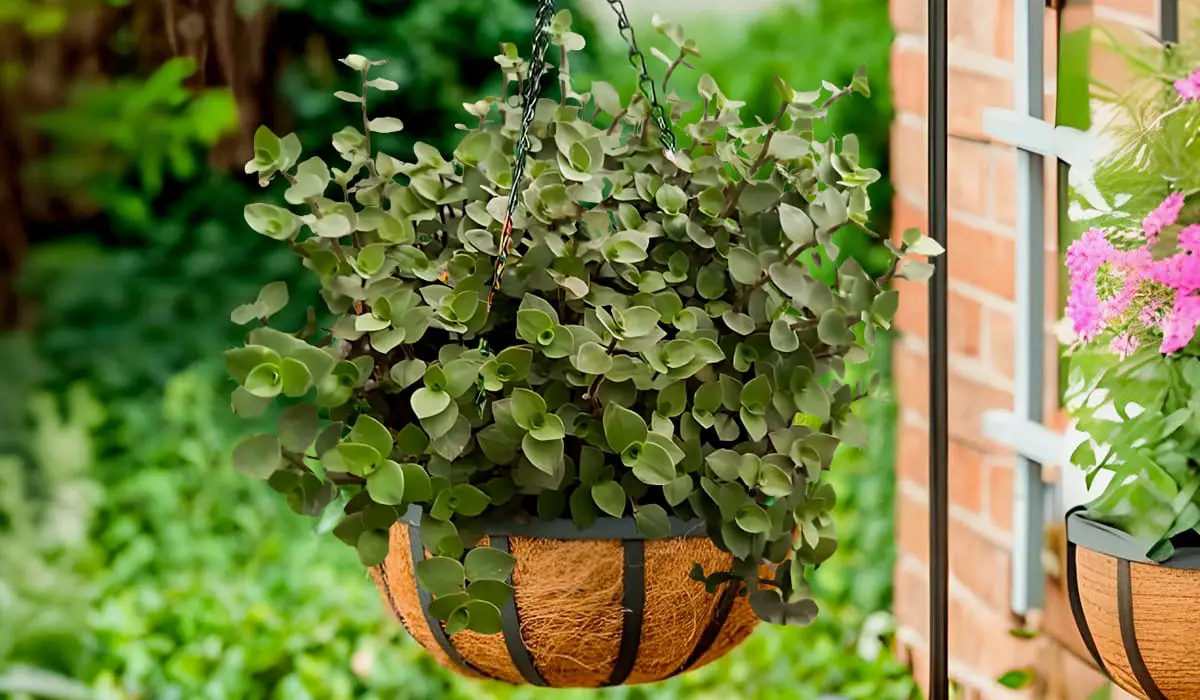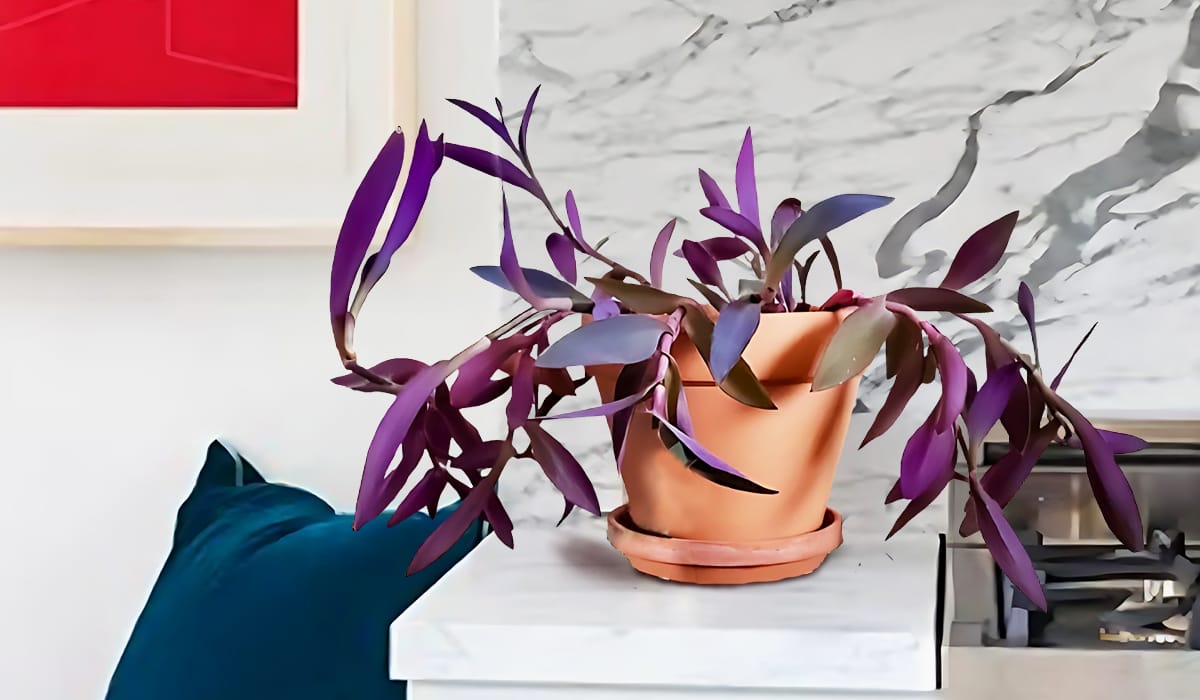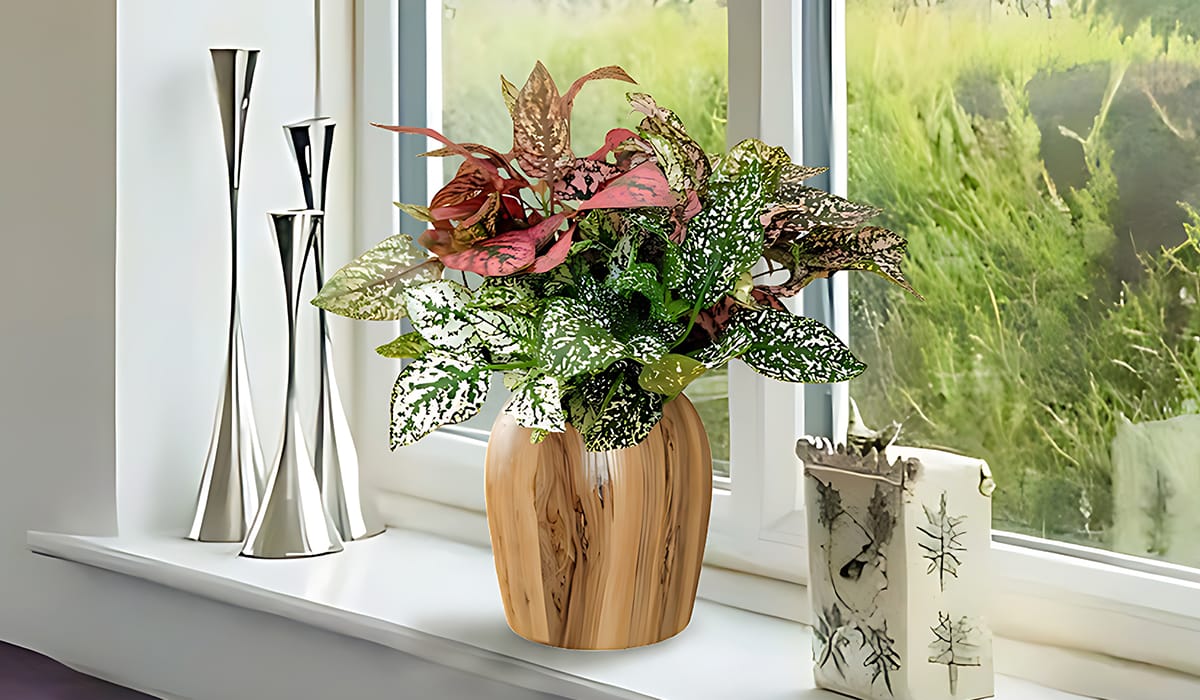Are you looking a good Rubber Plant and if You searching, how to propagate, grow, and care for Rubber Plants?
Great You have come to one of the best resources available on the internet.
We researched several books, blogs, and videos about the Rubber Plant and added our personal experiences then we wrote this article. If you read this full article properly. Then you will get a complete idea of the Rubber Plants and care of them. So if you are a plant lover we hope you will enjoy this article.
let's Introduce

Rubber Plant
The rubber plant (Ficus elastica) is a popular choice for indoor plant enthusiasts. Known for its attractive, glossy leaves and low maintenance requirements, the rubber plant is a fantastic addition to any home. In this article, we'll delve into everything you need to know about growing and caring for rubber plants. You can collect it from any nursery or any online platform.
| Common Name: | Rubber plant |
| Botanical Name: | Ficus elastica |
| Plant Type: | Evergreen tree or houseplant. |
| Family: | Moraceae |
| Height: | Typically grows to 6-10 feet (1.8-3 meters) indoors, but can get taller in optimal conditions. |
| Tolerate: | Low light conditions, occasional underwatering, and some neglect. |
| Sun Exposure: | Bright, indirect light; can tolerate some shade. |
| Mature Size: | Can reach up to 100 feet (30 meters) in its natural habitat. |
| Soil pH: | Slightly acidic to neutral (around 6.0-7.0) |
| Soil Type: | Well-draining potting mix. |
| Flower Color: | White |
| Bloom Time: | Rarely blooms indoors; if it does, typically in late spring to early summer. |
| Native Area: | Southeast Asia, particularly India and Malaysia. |
| Toxicity: | Mildly toxic to pets (cats and dogs) if ingested. |
| Hardiness Zones: | USDA zones 10-12 for outdoor growth; typically grown indoors in most regions. |
How to propagate Rubber Plants
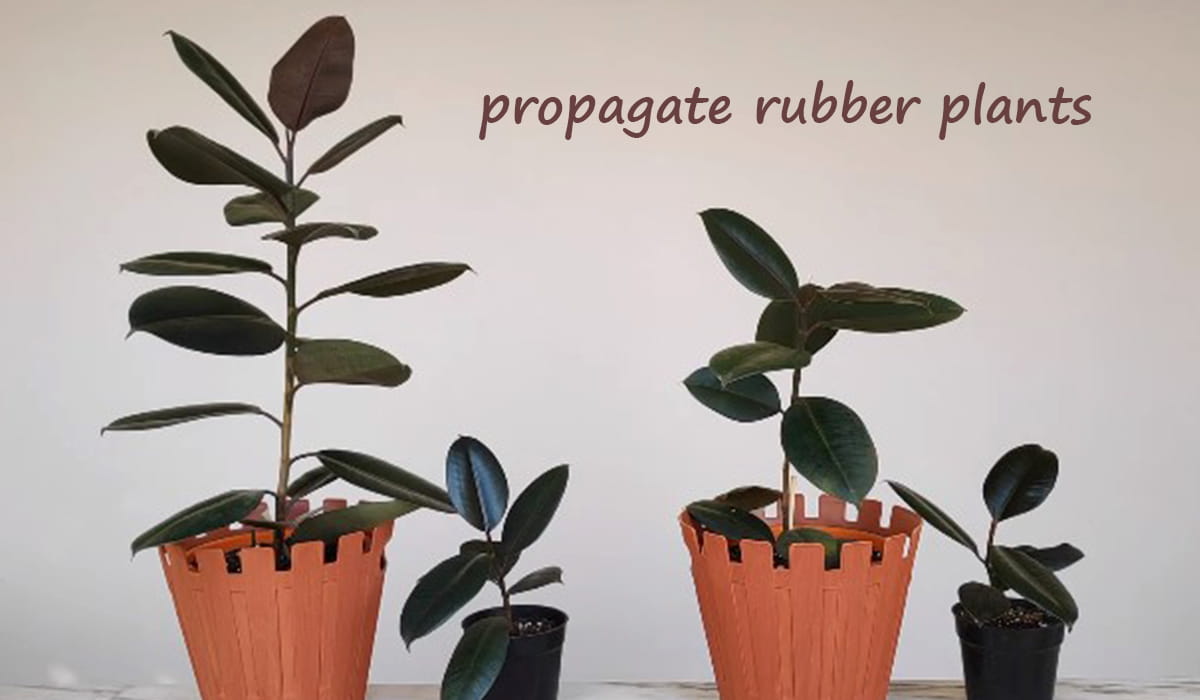
One of the great things about rubber plants is their ease of propagation. Whether you want to share your plant with a friend or expand your collection, propagating a rubber plant is a rewarding process. We'll guide you through the steps to successfully propagate your rubber plant.
Rubber plants can be propagated through various methods, including leaf cuttings, air layering, and stem cuttings. Leaf cuttings involve taking a healthy leaf and rooting it in soil or water. Air layering is a more advanced technique, but it can yield impressive results. Stem cuttings are the most common method and are relatively simple.
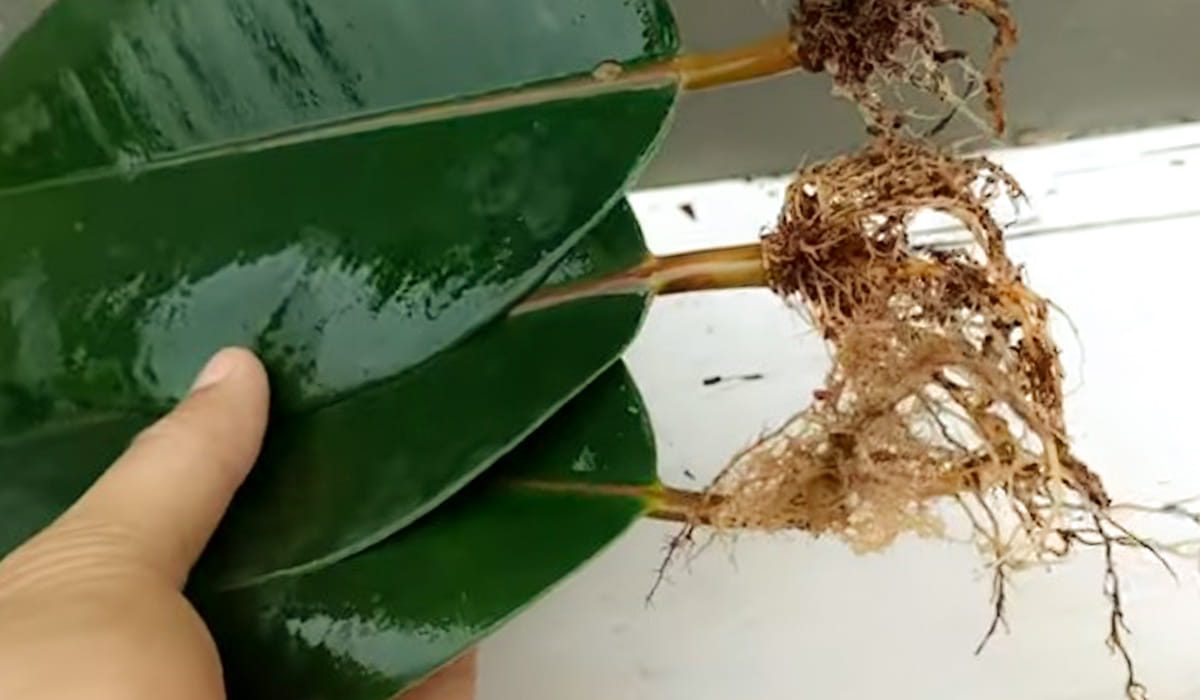
Leaf Cuttings:
To propagate using leaf cuttings, follow these steps:
- Choose a healthy, mature leaf from your rubber plant.
- Cut the leaf into sections, each about 4-6 inches in length, ensuring that each section has a vein running through it.
- Allow the cuttings to air dry for a day or two, allowing the cut ends to callus.
- Plant the cuttings in a well-draining potting mix.
- Keep the soil consistently moist but not waterlogged, and place the pot in a bright, indirect light location.
- After a few weeks, roots should begin to develop, and new shoots will emerge from the leaf sections.
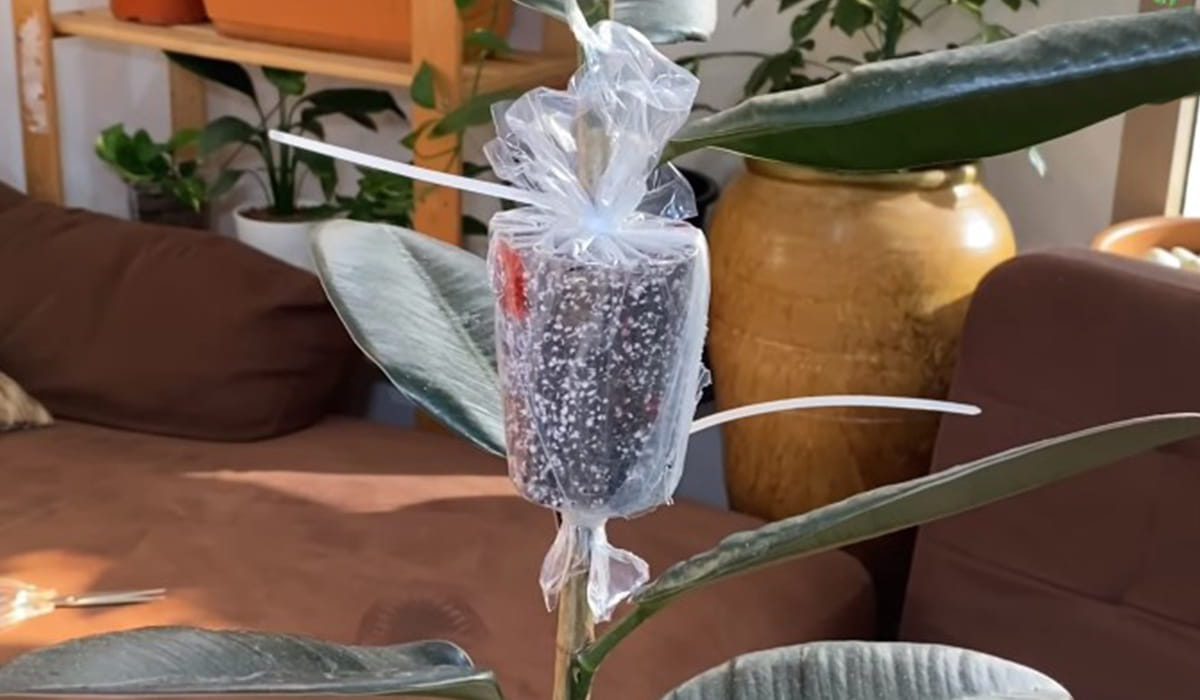
Air Layering:
Air layering involves creating a wound on a rubber plant stem, encouraging it to develop roots while still attached to the parent plant. Here's how to do it:
- Select a healthy, flexible stem for your rubber plant.
- About 12-18 inches from the tip of the stem, make a small upward cut or remove a 1-inch wide ring of bark.
- Apply rooting hormone to the exposed area.
- Wrap the wounded area with moist sphagnum moss and cover it with plastic wrap.
- Secure the moss and plastic with string or a rubber band.
- Keep the moss consistently moist, and after a few months, roots will form within the moss.
- Once roots are well-established, cut below the rooted section and pot it in its own container.
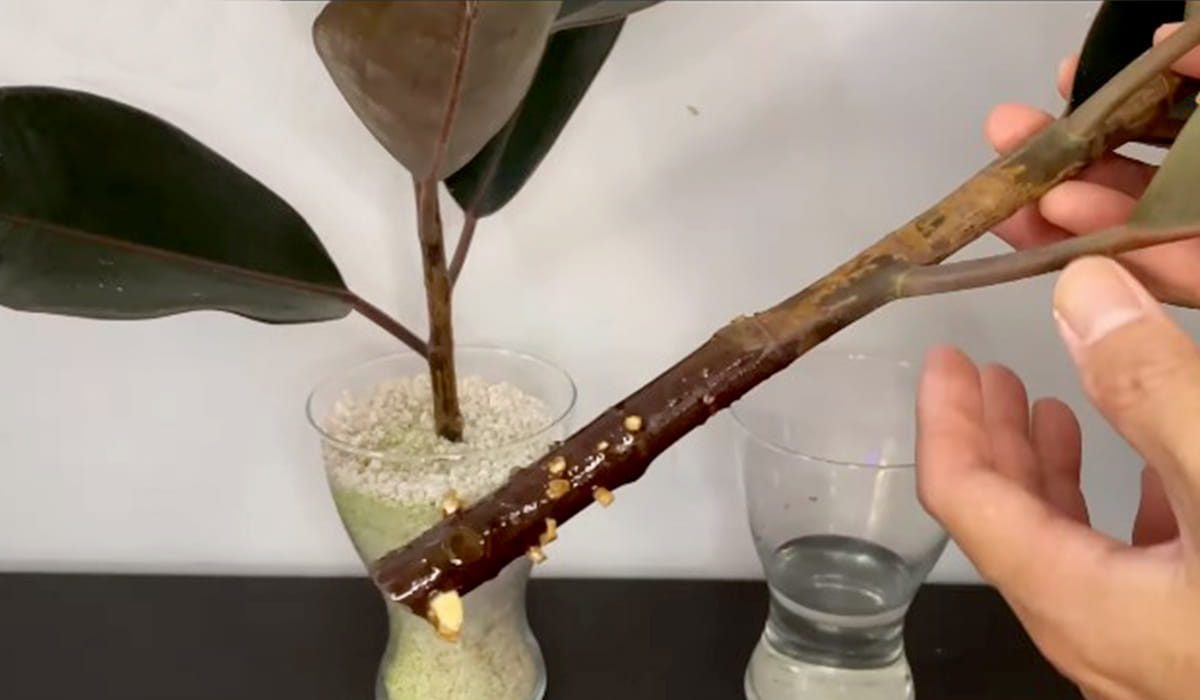
Stem Cuttings:
Stem cuttings are the most straightforward method:
- Select a healthy, non-flowering stem from your rubber plant, preferably with at least two leaf nodes.
- Cut the stem just below a leaf node, ensuring you have a cutting that is 4-6 inches long.
- Remove any leaves from the lower part of the cutting.
- Allow the cut end to air dry and callus for a day or two.
- Plant the cutting in a pot filled with well-draining soil.
- Water lightly and place the pot in a bright, indirect light spot.
- Roots should develop within a few weeks, and new growth will emerge from the cutting.
Propagation is a fun and rewarding way to grow your rubber plant collection or share your love of houseplants with others.
Rubber Plants Care Tips
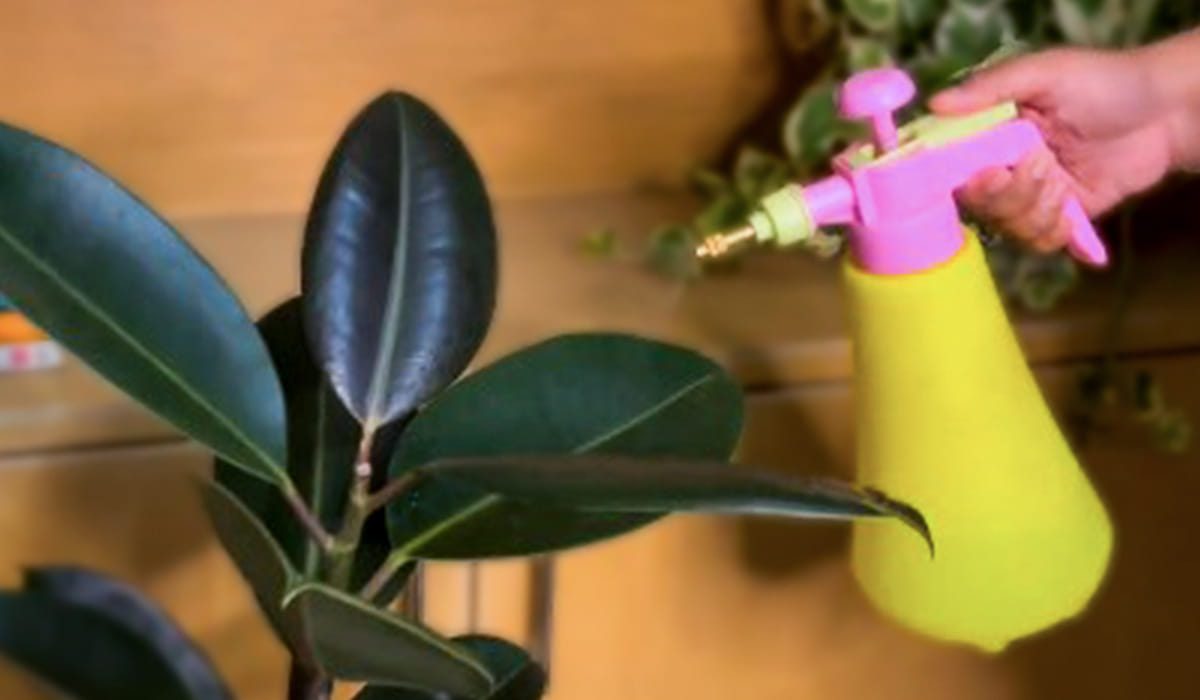
The rubber plant (Ficus elastica) is a popular choice among houseplant enthusiasts due to its attractive, glossy leaves and ease of care. Whether you're a seasoned plant parent or just starting your green journey, this guide will provide you with essential tips on how to care for your rubber plant and ensure it thrives in your home.
1. Light Requirements:
One of the keys to successful rubber plant care is providing the right amount of light. Rubber plants prefer bright, indirect sunlight. Place your plant near a window with filtered light, but avoid direct sunlight, as it can scorch the leaves. If your home lacks bright light, don't worry—rubber plants can tolerate lower light conditions, but their growth may be slower.
2. Watering:
Proper watering is crucial to keep your rubber plant healthy. Allow the top inch (2.5 cm) of the soil to dry out between waterings. Stick your finger into the soil to check its moisture level. When it's time to water, do so thoroughly, allowing excess water to drain from the pot. Empty the saucer beneath the pot to prevent waterlogged roots, which can lead to root rot. During the growing season (spring and summer), water more frequently, and reduce watering in the dormant season (fall and winter).
3. Humidity:
Rubber plants originate from tropical regions, so they appreciate higher humidity levels. While they can adapt to average household humidity, you can help by misting the leaves regularly or placing a humidity tray filled with water and pebbles near the plant.
4. Temperature:
Maintain a warm and stable environment for your rubber plant. They thrive in temperatures between 65°F to 75°F (18°C to 24°C). Avoid exposing them to drafts or sudden temperature changes, as they are sensitive to cold.
5. Potting Mix:
Choose a well-draining potting mix designed for houseplants or create your own mix by combining potting soil with perlite or sand. Repot your rubber plant every 2-3 years or when it becomes root-bound, move it to a slightly larger pot.
6. Fertilization:
During the growing season (spring and summer), feed your rubber plant with a balanced, water-soluble fertilizer diluted to half strength every 4-6 weeks. Reduce or eliminate fertilization during the dormant season.
7. Pruning:
Pruning your rubber plant helps control its size and shape. Trim leggy or unhealthy growth and remove any yellowing or dead leaves. Remember to wear gloves when pruning, as the plant's sap can be irritating to the skin.
8. Pests and Diseases:
Keep an eye out for common houseplant pests like mealybugs and spider mites. If you notice an infestation, treat it promptly with insecticidal soap or neem oil. Good air circulation around the plant can help prevent fungal issues.
9. Support:
As your rubber plant grows tall, it may become top-heavy. Use stakes or bamboo supports to help keep it upright and maintain an attractive shape.
By following these care guidelines, your rubber plant can thrive and become a stunning addition to your indoor space. With patience and attention, you'll enjoy the lush beauty of this remarkable houseplant for years to come.
Rubber Plant Varieties
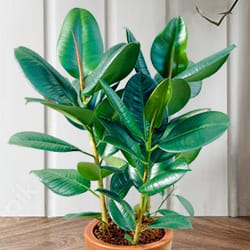
| Robusta Rubber Plant |
|---|
| The 'Robusta' variety is known for its broad, glossy leaves that are darker green and larger than those of the standard rubber plant. |
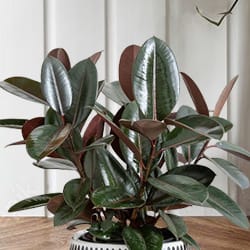
| Burgundy Rubber Plant |
|---|
| As the name suggests, this variety features deep burgundy or reddish-purple leaves, adding a touch of elegance to your indoor space. |
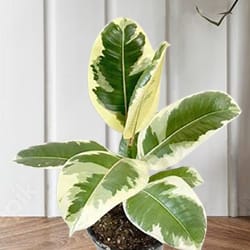
| Tineke rubber plant |
|---|
| 'Tineke' is prized for its variegated leaves, which display a striking mix of green, white, and pink hues. The variegation pattern can vary, making each plant unique. |

| Black Prince Rubber Plant |
|---|
| This variety is recognized for its nearly black, deep purple leaves. While not entirely black, the dark foliage provides an exotic and dramatic appeal. |

| Bambino Rubber Plant |
|---|
| 'Bambino' is a smaller, more compact variety of rubber plants, making it ideal for small spaces or as a tabletop decoration. |
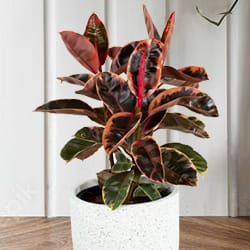
| Ruby Rubber Plant |
|---|
| This variety showcases unique pinkish-red stems and veining on its leaves, adding a subtle touch of color to its overall green appearance. |
Common Rubber Plant Problems: And Solution
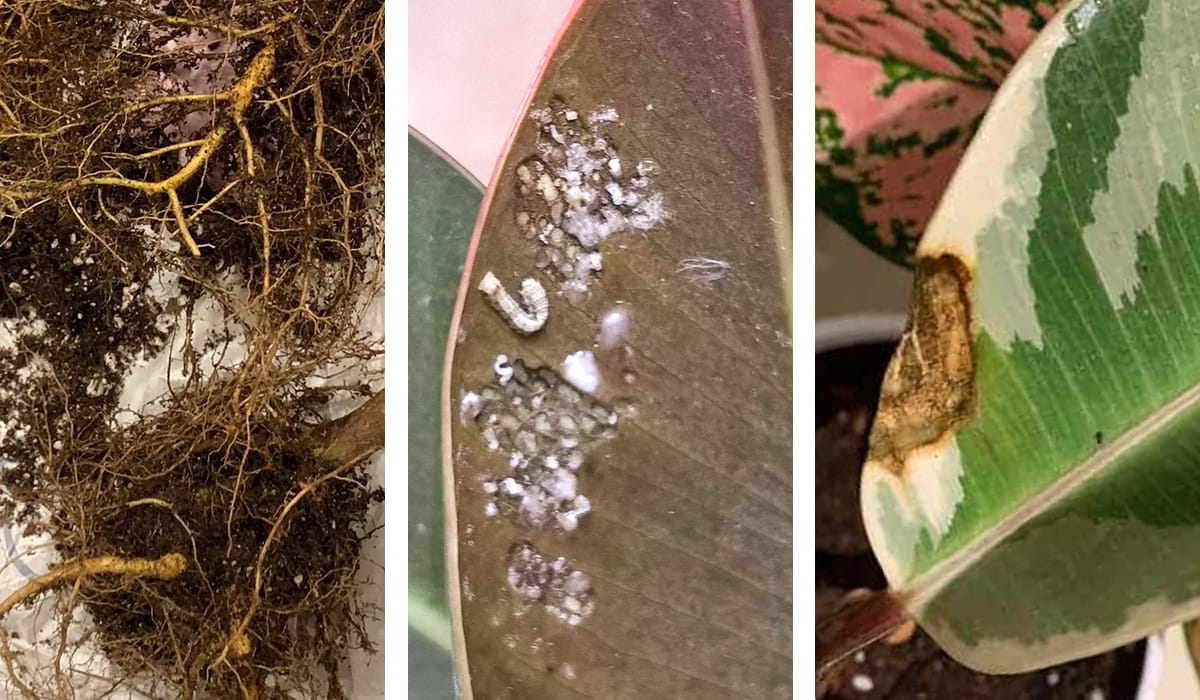
Rubber plants (Ficus elastica) are popular indoor plants known for their resilience and lush foliage. However, like any houseplant, they can encounter issues from time to time. In this article, we'll discuss common rubber plant problems and provide simple solutions to help you keep your rubber plant thriving.
1. Yellowing Leaves:
Problem: Yellow leaves on a rubber plant can be caused by overwatering, insufficient light, or poor drainage.
| Solution |
|---|
| Ensure proper watering by allowing the top inch of soil to dry before watering again. Place the plant in bright, indirect light, and ensure it's not exposed to direct sunlight. Ensure the pot has drainage holes to prevent waterlogged soil. |
2. Drooping Leaves:
Problem: Drooping leaves usually indicate underwatering or overwatering. The plant may also need repotting if it has become root-bound.
| Solution |
|---|
| Check the soil moisture; if it's dry, water thoroughly. If it's consistently wet, reduce watering frequency. If the plant is root-bound, consider repotting it into a slightly larger pot. |
3. Brown Tips on Leaves:
Problem: Brown tips on rubber plant leaves are often a sign of low humidity or dry air.
| Solution |
|---|
| Increase humidity around the plant by misting it regularly, using a humidity tray, or placing a humidifier nearby. Ensure proper watering and avoid letting the soil dry out completely. |
4. Leaf Drop:
Problem: Leaf drop can occur due to environmental changes, drafts, or sudden temperature fluctuations.
| Solution |
|---|
| Maintain a stable environment without exposing the plant to drafts or significant temperature changes. Ensure consistent watering and provide indirect light. |
5. Pests:
Problem: Common houseplant pests like mealybugs, spider mites, and scale insects can infest rubber plants, leading to yellowing leaves and a decline in overall health.
| Solution |
|---|
| Inspect the plant regularly for signs of pests. If you detect them, isolate the affected plant and treat it with neem oil or insecticidal soap. Wipe the leaves gently to remove pests. |
6. Root Rot:
Problem: Root rot is caused by overwatering and poor drainage, leading to the plant's roots rotting.
| Solution |
|---|
| Remove the plant from the pot, trim away any rotten roots, and repot it in fresh, well-draining soil. Adjust your watering habits to prevent overwatering. |
7. Wilting:
Problem: Wilting can result from underwatering, root problems, or environmental stress.
| Solution |
|---|
| Examine the plant's soil moisture and adjust your watering accordingly. Address any root issues promptly. Ensure the plant is in a stable environment with consistent conditions. |
By addressing these common rubber plant problems with the provided solutions, you can help your rubber plant remain healthy and vibrant. Remember that patience and attentiveness are key to successful rubber plant care, and with proper care, your rubber plant will continue to thrive and bring greenery and beauty to your home.
Rubber Plants Benefits
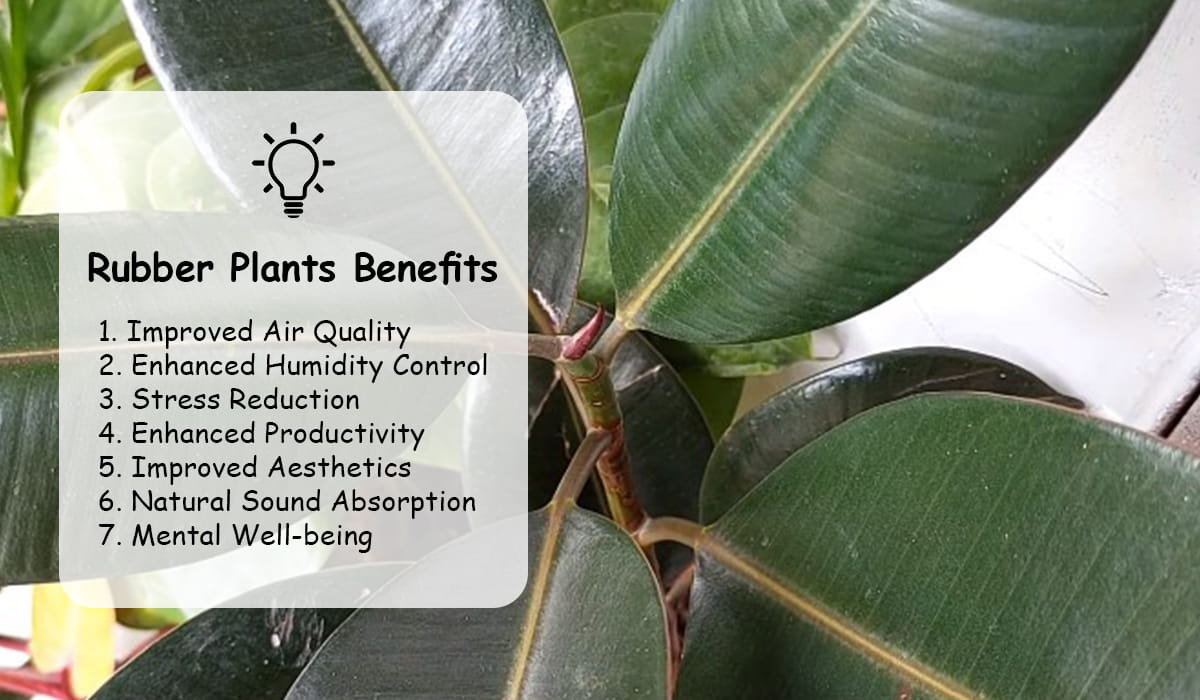
Rubber plants (Ficus elastica) are more than just attractive houseplants; they offer a host of benefits that contribute to both the aesthetic appeal of your home and your overall well-being. In this article, we will explore the numerous advantages of having rubber plants as part of your indoor decor.
1. Improved Air Quality:
- One of the most significant benefits of rubber plants is their ability to purify the air. They help remove indoor air pollutants such as formaldehyde, xylene, and toluene, making the air in your home fresher and healthier to breathe. This feature can be especially valuable in urban environments with increased pollution levels.
2. Enhanced Humidity Control:
- Rubber plants naturally release moisture into the air through a process called transpiration. This helps increase the humidity levels in the room, which can be beneficial, particularly during dry winter months or in air-conditioned spaces. Proper humidity promotes better respiratory health and can reduce the risk of issues like dry skin and throat irritation.
3. Stress Reduction:
- Indoor plants, including rubber plants, have been linked to reduced stress and anxiety levels. The act of caring for a living thing, even as simple as watering a plant, can have a calming effect on the mind. Additionally, the presence of greenery indoors is visually soothing and can contribute to a sense of relaxation.
4. Enhanced Productivity and Creativity:
- Research has shown that the presence of indoor plants, such as rubber plants, can boost productivity and creativity. Their calming influence and ability to reduce stress can help create a more conducive environment for focused work or creative thinking.
5. Improved Aesthetics:
- Rubber plants are prized for their attractive, glossy leaves that add a touch of elegance and sophistication to any space. They are versatile in their ability to complement various interior design styles, from modern to traditional, and can serve as eye-catching focal points or as subtle accents.
6. Natural Sound Absorption:
- Plants like rubber plants can absorb and deflect sound, which can help reduce noise levels in your home or office. This is particularly useful if you live in a noisy urban area or if you work from home and need a quieter workspace.
7. Mental Well-being:
- Studies have shown that interactions with indoor plants can positively impact mental health. Caring for a rubber plant can provide a sense of purpose and accomplishment, helping to combat feelings of loneliness or depression.
Incorporating a rubber plant into your indoor space can be a simple yet effective way to enhance your surroundings and well-being. Beyond their decorative value, these plants offer numerous benefits that contribute to a healthier, happier, and more aesthetically pleasing environment. Whether you're an experienced plant enthusiast or a newcomer to the world of houseplants, a rubber plant is an excellent addition to any indoor space.
FAQ
How do you take care of a rubber plant indoors?
What are the disadvantages of rubber plants?
1. Toxicity: Rubber plants are mildly toxic if ingested by pets or humans. Keep them out of reach of children and pets.
2. Size: Over time, rubber plants can grow quite tall, which may be challenging to accommodate in smaller spaces.
3. Dust Accumulation: Like many indoor plants, rubber plants can collect dust on their leaves, which can affect their appearance and may require regular cleaning.
4. Sensitive to Overwatering: Rubber plants are susceptible to root rot if overwatered or if they sit in waterlogged soil. Proper watering is essential.
5. Susceptible to Pests: They can attract common houseplant pests such as mealybugs and spider mites, requiring occasional pest control measures.
Do rubber plants need direct sunlight?
wrapping up
The rubber plant is a fantastic addition to your indoor garden, and with the right care, it can thrive for many years. So, go ahead and bring a touch of nature into your home with this stunning and resilient houseplant.
But don't stop here! Consider expanding your indoor plant collection with other easy-to-care-for plants like the ZZ Plant, Snake Plant, Spider Plants, and Chinese Evergreen Plant. Each of these plants offers its unique charm and benefits.
Thanks for reading this article. if you have any questions must comment and contact our team. don't forget to share this article with your friends.

